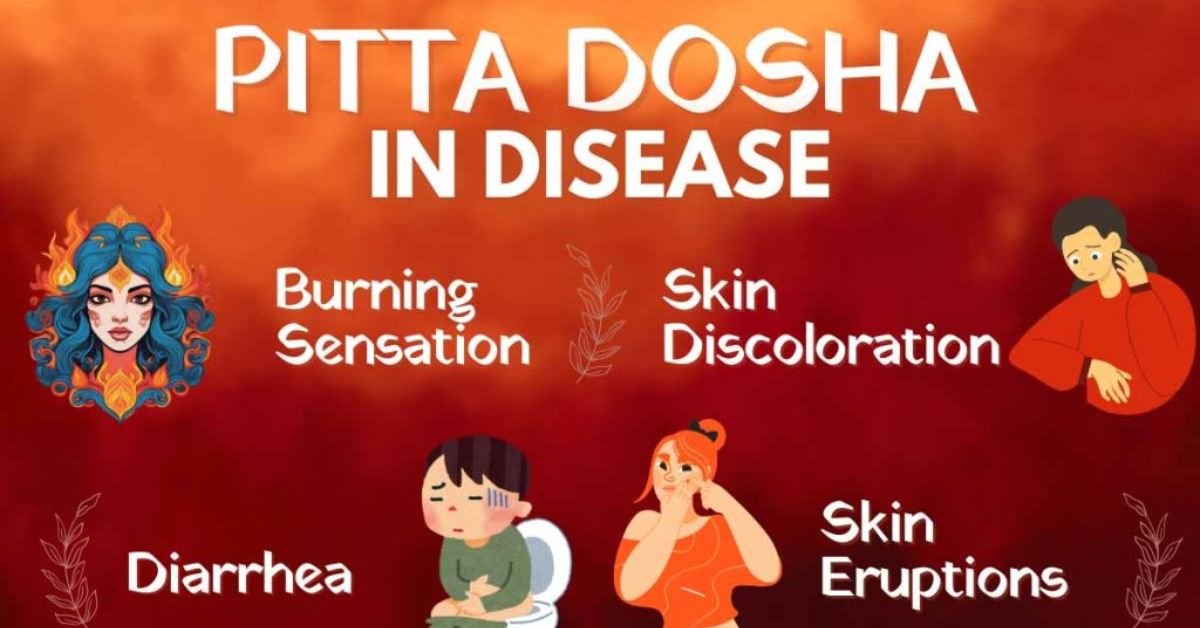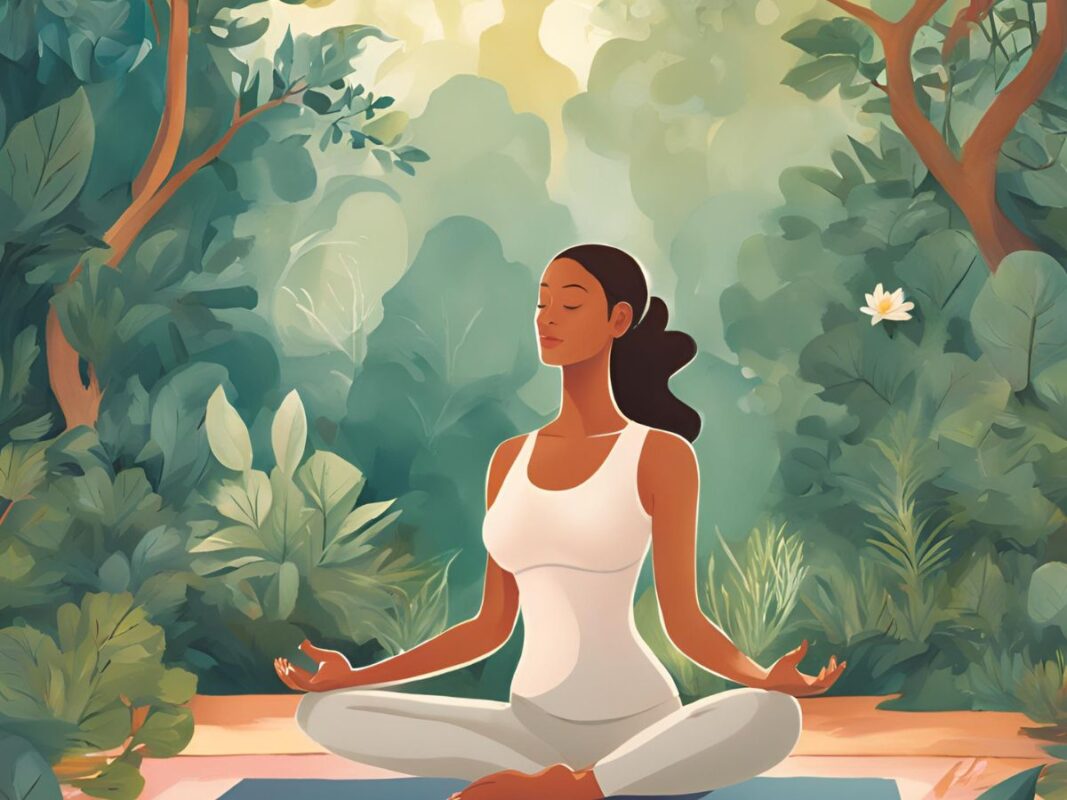In the ancient science of Ayurveda, balance is the key to health and well-being. Ayurveda identifies three primary doshas—Vata, Pitta, and Kapha—that govern our physical, mental, and emotional characteristics. When these doshas are in harmony, we thrive. However, imbalances can lead to discomfort and disease. Among the three, Pitta Dosha Symptoms Solutions and Expert Guidance, associated with fire and water elements, is responsible for transformation, metabolism, and energy production. When Pitta becomes imbalanced, it can manifest in a variety of symptoms that affect both body and mind. In this comprehensive guide, we’ll explore the symptoms of Pitta dosha imbalance, practical solutions to restore balance, and expert guidance to help you live in harmony with your unique constitution.
Understanding Pitta Dosha
Pitta dosha is the force of transformation in the body and mind. It governs digestion, metabolism, body temperature, and mental clarity. People with a dominant Pitta constitution are often characterized by their sharp intellect, ambition, and strong digestion. They typically have a fiery attitude, warm skin, and a medium build. that thrives on challenges. However, when Pitta becomes excessive or aggravated, it can lead to physical and emotional imbalances that disrupt overall health.
Pitta is influenced by fire and water, Pitta Dosha contributing to its hot, sharp, and oily qualities. Depending on balance, these qualities manifest in both positive and negative ways. For example, a balanced Pitta fosters clear thinking and efficient digestion, while an imbalanced Pitta can lead to irritability, inflammation, and digestive issues.
Symptoms of Pitta Dosha Imbalance

An imbalance in Pitta dosha can affect multiple systems in the body and mental and emotional well-being. Below are the most common symptoms of excessive Pitta, categorized by their impact on physical and psychological health.
Physical Symptoms of Pitta Imbalance
- Digestive Issues: Pitta governs digestion, so an imbalance often appears in the gastrointestinal system. Symptoms include acid reflux, heartburn, nausea, diarrhea, or excessive hunger. You may also experience a burning sensation in the stomach or intestines.
- Skin Problems: Pitta’s fiery nature can manifest on the skin as rashes, acne, rosacea, or excessive redness. The skin may feel hot, irritated, or prone to inflammation.
- Overheating: Excessive body heat is a hallmark of Pitta imbalance. This can present as hot flashes, night sweats, or an overheated feeling, What’s a Kapha Diet A Simple Guide for Beginners even in cool environments.
- Inflammation: Chronic inflammation, such as joint pain, tendonitis, or swollen tissues, is common when Pitta is aggravated. Inflammatory conditions like gastritis or ulcers may also arise.
- Vision Problems: Pitta is linked to the eyes, and an imbalance may cause burning redness or sensitivity to light. Some individuals report blurred vision or eye strain.
- Foul Odors: Excessive Pitta can lead to strong body odor, bad breath, or sour-smelling sweat due to increased heat and metabolic activity.
Psychological and Emotional Symptoms
- Irritability and Anger: Pitta’s fiery nature can make individuals prone to impatience, frustration, or sudden outbursts of anger when out of balance.
- Judgmental Tendencies: An imbalanced Pitta may lead to overly critical or perfectionist behavior, causing strained relationships or self-criticism.
- Mental Overload: Pitta types are naturally driven and focused, but excess Pitta can result in mental burnout, obsessive thinking, or difficulty relaxing.
- Jealousy or Competitiveness: Feelings of envy or an overly competitive nature may surface as Pitta’s ambition becomes unbalanced.
Lifestyle Indicators
- Overworking: Pitta-dominant individuals may push themselves too hard, leading to stress and exhaustion.
- Sensitivity to Heat: Discomfort in hot weather or spicy foods is a common sign of Pitta aggravation.
- Disrupted Sleep: Insomnia or restless sleep, Arthritis Ayurvedic Treatment often due to overheating or racing thoughts, can indicate a Pitta imbalance.
Causes of Pitta Dosha Imbalance

Understanding the root causes of Pitta imbalance is essential for addressing it effectively. Common triggers include:
- Diet: Consuming excessive spicy, sour, or salty foods can aggravate Pitta. Alcohol, caffeine, and fried foods are also culprits.
- Lifestyle: Overworking, excessive exposure to heat or sunlight, and a lack of rest can increase Pitta.
- Emotional Stress: Anger, frustration, or suppressed emotions can stoke Pitta’s fiery nature.
- Environmental Factors: Hot, humid climates or prolonged sun exposure can exacerbate Pitta.
- Seasonal Changes: Pitta tends to become aggravated during summer when heat and humidity peak.
Solutions to Balance Pitta Dosha
Restoring balance to Pitta dosha requires cooling, calming, and grounding practices that counteract its fiery, intense qualities. Unlocking the Power of Your Dosha Below are practical solutions, including dietary adjustments, lifestyle changes, and holistic remedies.
1. Pitta-Balancing Diet
Diet plays a critical role in managing Pitta dosha. Focus on foods that are cooling, hydrating, and easy to digest. Here are some guidelines:
- Favor Cooling Foods: Choose sweet, bitter, and astringent tastes to pacify Pitta. Examples include sweet fruits (apples, pears, melons), leafy greens, cucumbers, and zucchini.
- Avoid Pitta-Aggravating Foods: Minimize spicy, sour, and salty foods. Limit chili peppers, tomatoes, citrus fruits, vinegar, and fermented foods.
- Hydrate: To cool the body, drink plenty of coconut water, water, or herbal teas like chamomile or peppermint.
- Incorporate Healthy Fats: Ghee, coconut, and olive oil are soothing for Pitta and support digestion.
- Eat Mindfully: Avoid overeating or skipping meals, as both can disrupt Pitta’s digestive fire.To encourage relaxation, eat in a quiet setting.
Sample Pitta-Balancing Meal Plan:
- Breakfast: Oatmeal with almond milk, sliced bananas, and a sprinkle of cinnamon.
- Lunch: Quinoa salad with cucumber, avocado, spinach, and a drizzle of olive oil.
- Snack: Fresh watermelon or a handful of soaked almonds.
- Dinner: Steamed vegetables with basmati rice and a cooling mint chutney.
2. Lifestyle Adjustments
Lifestyle changes can help calm Pitta’s intensity and promote balance. Consider the following:
- Stay Cool: Avoid excessive heat, whether from hot weather, saunas, or intense exercise during the hottest part of the day. Opt for early morning or evening workouts.
- Practice Moderation: Balance work and rest to prevent burnout. Schedule downtime and avoid over-committing.
- Cooling Exercise: Engage in low-impact activities like swimming, yoga, or walking in nature. Avoid overly competitive or strenuous workouts.
- Sleep Well: Aim for 7–8 hours of rest in a cool, dark room. Avoid screens before bed to calm the mind.
3. Mind-Body Practices
Pitta imbalance often manifests as mental and emotional stress, so mind-body practices are essential for restoration.
- Meditation: Practice cooling meditation techniques, such as focusing on the breath or visualizing a serene lake. Aim for 10–20 minutes daily.
- Pranayama: Cooling breathing exercises like Sheetali (cooling breath) or Nadi Shodhana (alternate nostril breathing) can soothe Pitta.
- Yoga: To calm the body and mind, opt for gentle, restorative yoga poses like Child’s Pose, Forward Folds, Magiccann Full Spectrum or Moon Salutations.
- Journaling: Reflect on emotions like anger or frustration to process and healthily release them.
4. Herbal Remedies
Ayurvedic herbs can support Pitta balance by cooling the body and soothing inflammation. Always consult an Ayurvedic practitioner before starting herbal remedies. Common herbs include:
- Aloe Vera: Soothes the digestive tract and cools the body.
- Brahmi: Calms the mind and supports mental clarity.
- Amalaki: A cooling antioxidant that supports digestion and skin health.
- Shatavari: Nourishes and balances Pitta while supporting hormonal health.
5. Aromatherapy and Self-Care
Cooling essential oils like sandalwood, rose, or lavender can calm Pitta. Use them in a bath, massage oil, or diffuser. Regular self-massage (abhyanga) with coconut oil can also grind and cool the body.
Expert Guidance for Pitta Balance
While the above solutions are effective, working with an Ayurvedic practitioner can provide personalized guidance tailored to your unique constitution and imbalances. Here’s what to expect from expert support:
1. Constitutional Assessment
An Ayurvedic practitioner will assess your Prakriti (natural constitution) and Vikriti (current imbalances) through a detailed consultation. This may include pulse diagnosis, tongue analysis, and a review of your lifestyle and symptoms.
2. Customized Diet and Lifestyle Plan
Based on your assessment, the practitioner will create a tailored plan that includes dietary recommendations, daily routines (dinacharya), Punarnavadi Guggulu and seasonal adjustments to keep Pitta in check.
3. Panchakarma
For deep imbalances, an Ayurvedic practitioner may recommend Panchakarma, a detoxification process that cleanses the body of excess Pitta and restores balance. This may include therapies like cooling oil massages, herbal enemas, or Shirodhara (a calming oil drip on the forehead).
4. Emotional and Spiritual Support
Ayurveda recognizes the connection between mind, body, and spirit. Practitioners may suggest gratitude journaling, mantra chanting, or connecting with nature to address emotional imbalances.
Finding a Qualified Practitioner
Look for certified Ayurvedic practitioners through organizations like the National Ayurvedic Medical Association (NAMA) or consult local wellness centers. Online consultations are also widely available, making it easier to access expert guidance.
Living in Harmony with Pitta Dosha

Balancing Pitta dosha is about embracing its fiery energy while keeping it in check with cooling and grounding practices. By understanding the symptoms of imbalance and adopting a Pitta-pacifying lifestyle, you can harness Pitta’s gifts—clarity, ambition, and vitality—without succumbing to its excesses. Whether new to Ayurveda or a seasoned practitioner, the journey to balance is a lifelong process of self-awareness and self-care.
Key Takeaways
- Recognize Symptoms: Physical signs like heartburn, rashes, or overheating, and emotional signs like irritability or perfectionism indicate a Pitta imbalance.
- Adopt Cooling Practices: Focus on a Pitta-pacifying diet, CBD cooling exercises, and calming mind-body practices like meditation and yoga.
- Seek Expert Guidance: Work with an Ayurvedic practitioner for personalized recommendations and therapies like Panchakarma.
- Embrace Moderation: Balance work, rest, and play to prevent Pitta from becoming excessive.
By applying these methods to your daily activities, you can develop mental and physical balance and let your Pitta dosha become a source of transformation and strength. Begin modestly, pay attention to your body, and relish the path to vibrant health.
Conclusion
Understanding Pitta Dosha is essential for maintaining balance, health, and emotional well-being. When Pitta is aggravated, it can lead to symptoms like inflammation, irritability, skin rashes, and digestive issues. However, you can effectively restore harmony by adopting mindful dietary choices, cooling lifestyle practices, and herbal support.
Working with an experienced Ayurvedic practitioner offers personalized insights and treatments tailored to your unique constitution. You can achieve lasting vitality and inner peace by listening to your body and honoring Ayurvedic wisdom.Would you also like a few alternative versions depending on the tone you’re aiming for (like more motivational, professional, or soothing)?
FAQ
What are the common symptoms of an imbalanced Pitta Dosha?
Common symptoms include excessive body heat, skin rashes, acid reflux, irritability, anger, inflammation, and an intense craving for spicy foods.
How can I naturally balance my Pitta Dosha?
You can balance Pitta by eating cooling foods, avoiding spicy and oily dishes, practicing calming activities like meditation, and spending time in nature, especially near water.
What foods are best for calming Pitta?
Sweet, bitter, and astringent foods are best. Examples include cucumbers, melons, leafy greens, coconut, and, in moderation, dairy items like milk and ghee.
Can stress aggravate Pitta Dosha?
Yes, stress, overworking, and intense competition can all worsen Pitta imbalance, leading to emotional outbursts and physical symptoms.
When should I consult an Ayurvedic expert?
If lifestyle changes and diet adjustments don’t improve your symptoms or if you experience severe discomfort, it’s wise to consult a qualified Ayurvedic practitioner for personalized treatment.
Are there specific herbs that help with Pitta Dosha?
Yes! Herbs like Brahmi, Shatavari, Amalaki, and Guduchi traditionally calm and soothe aggravated Pitta.



